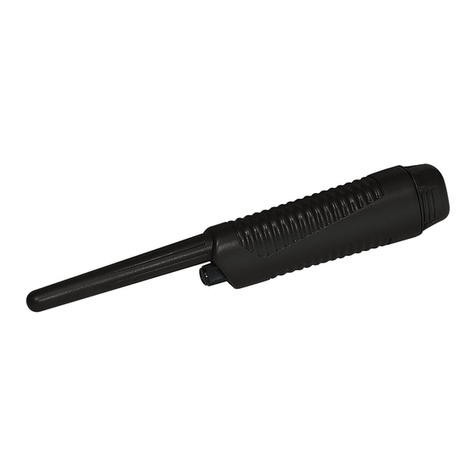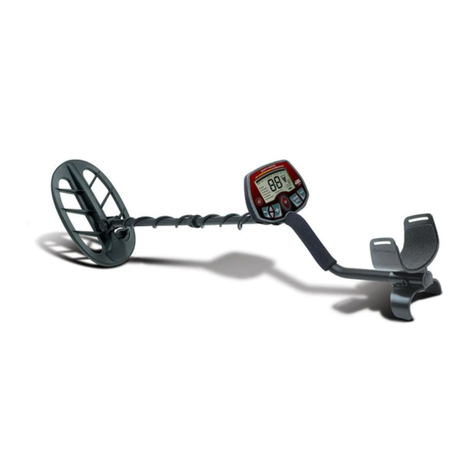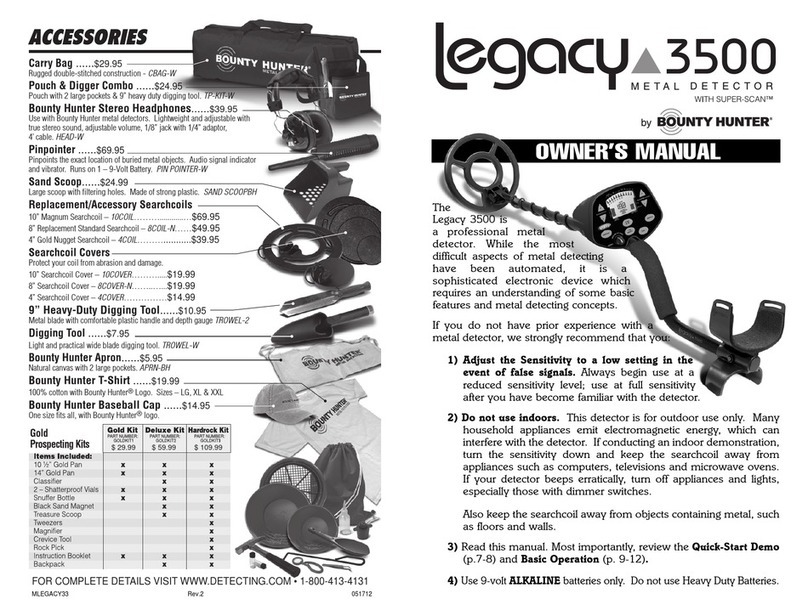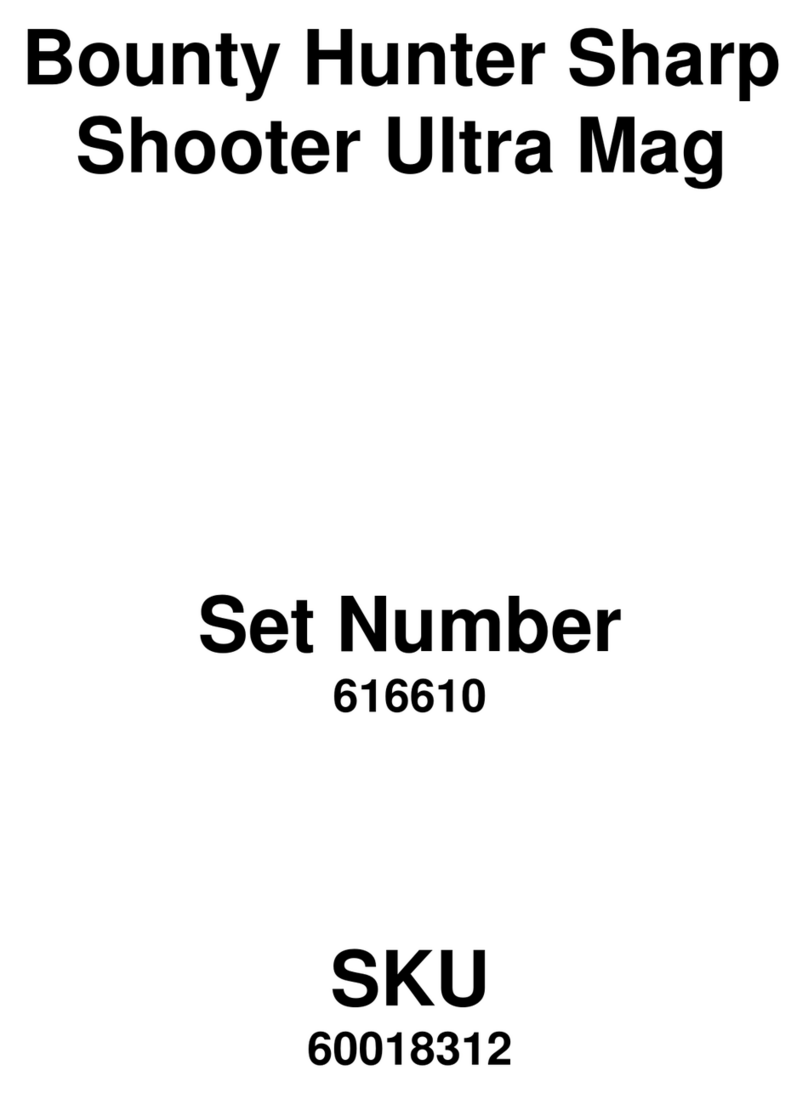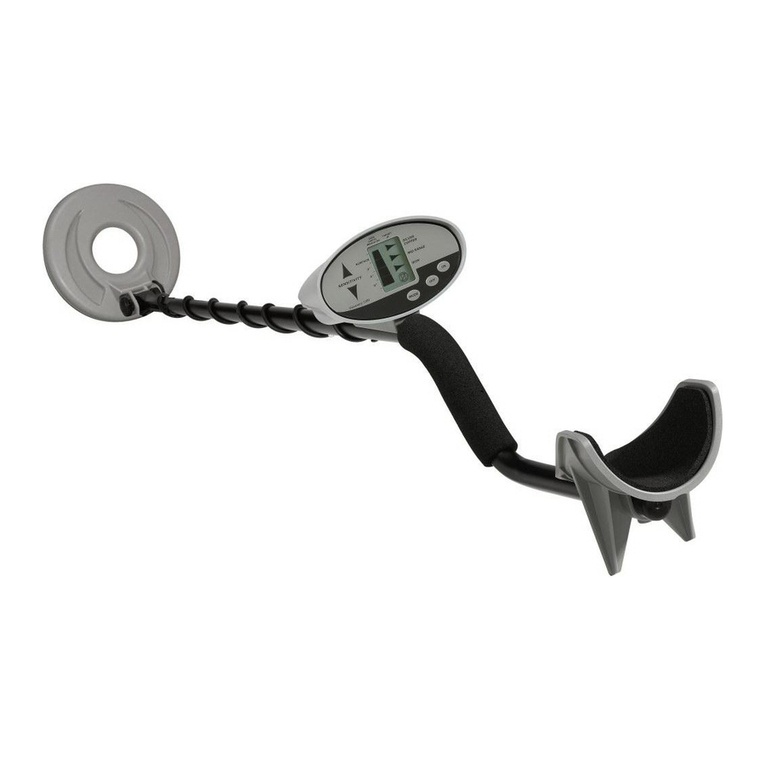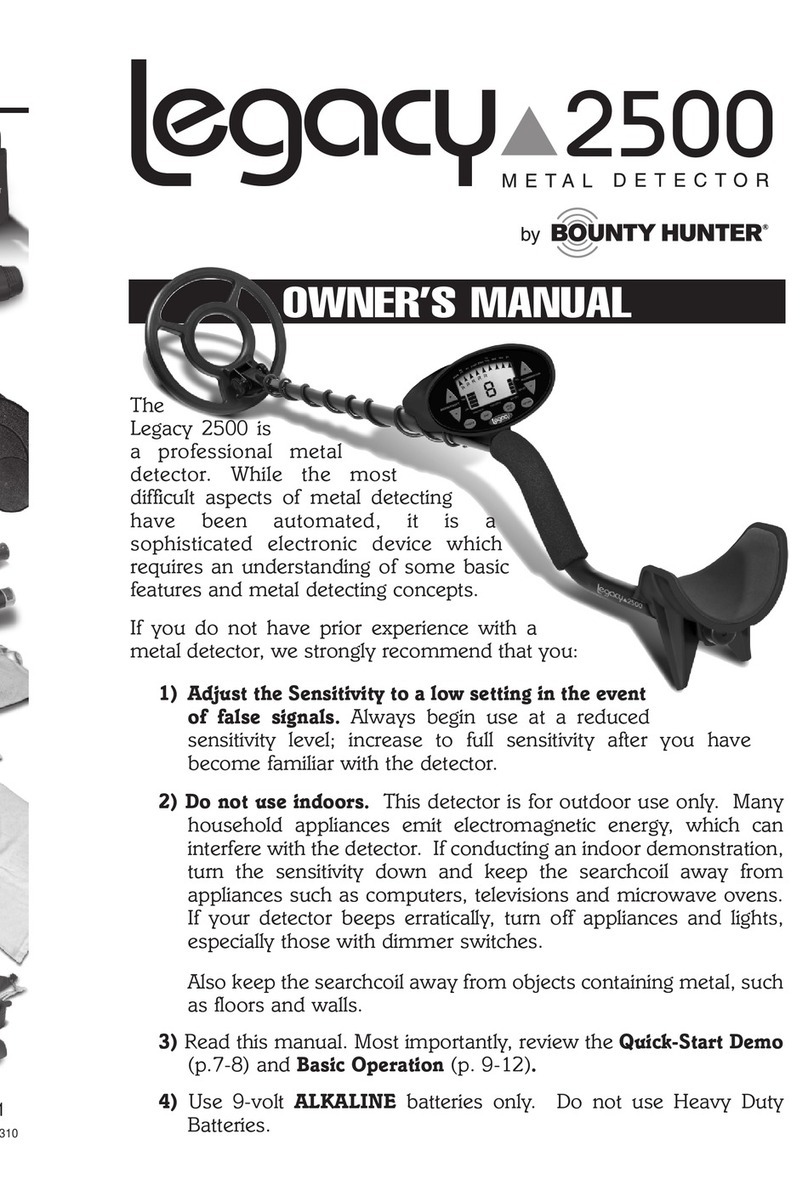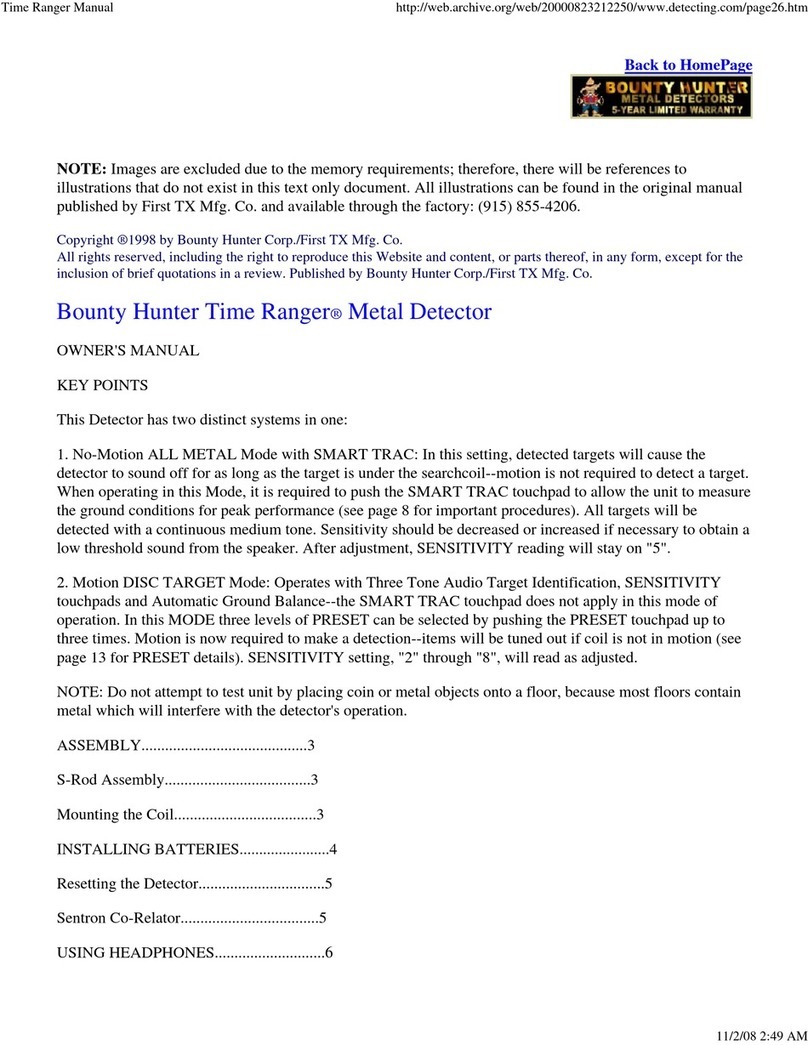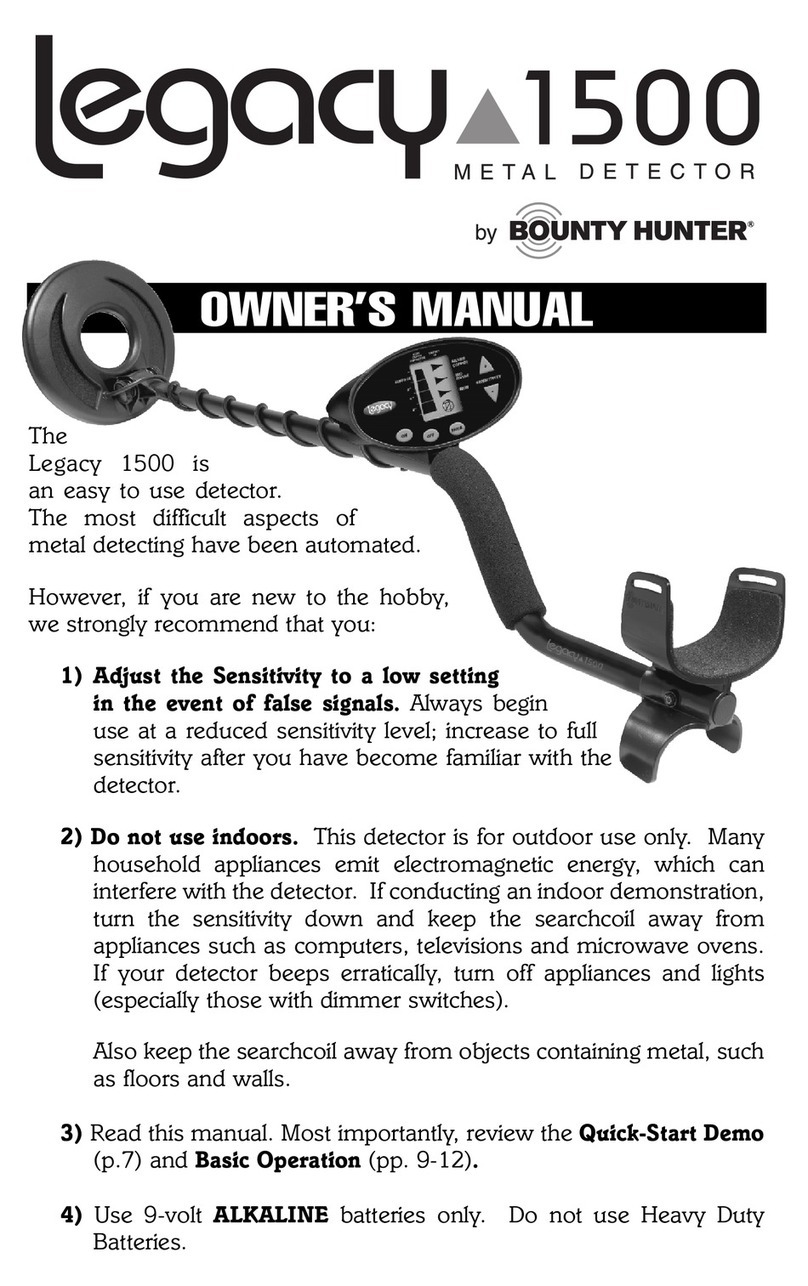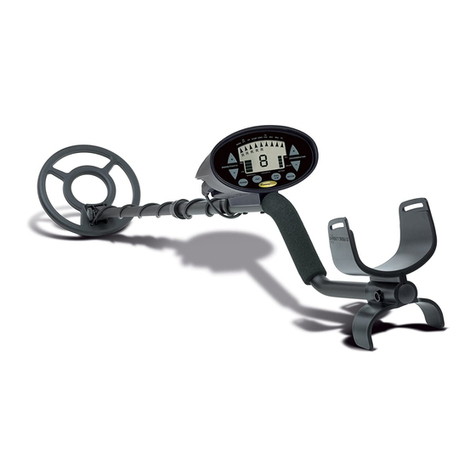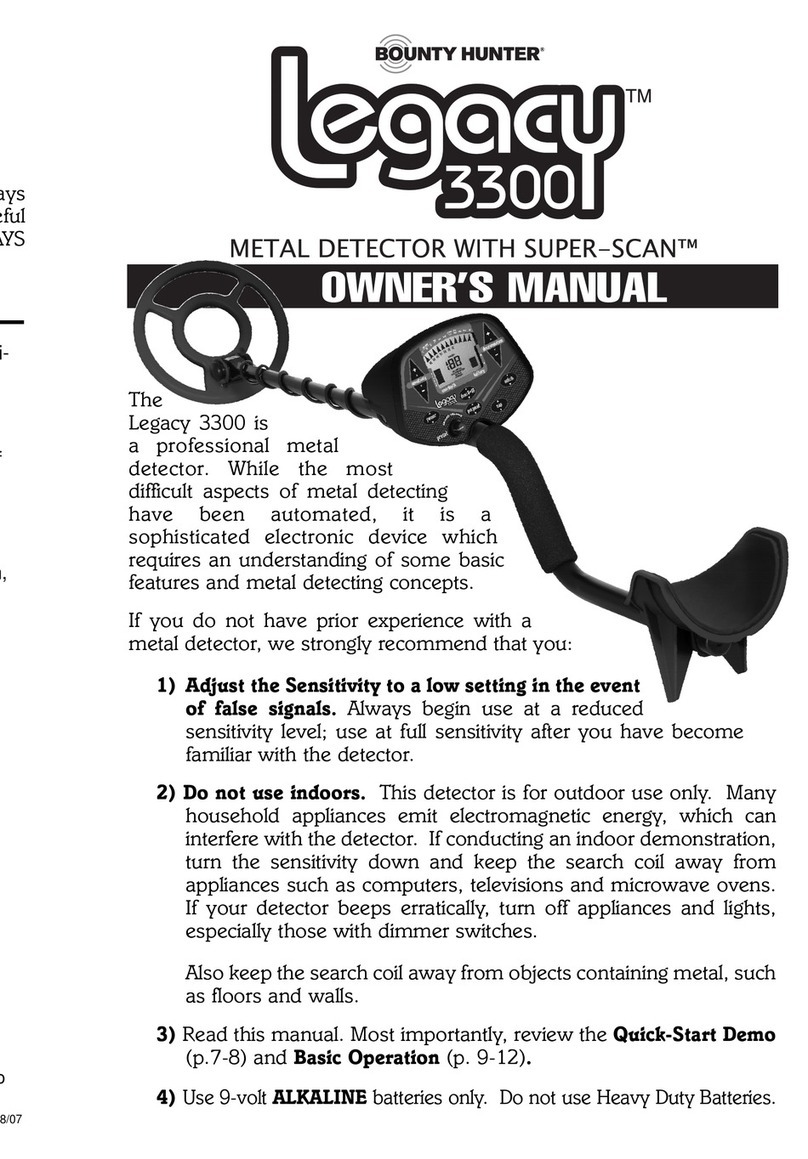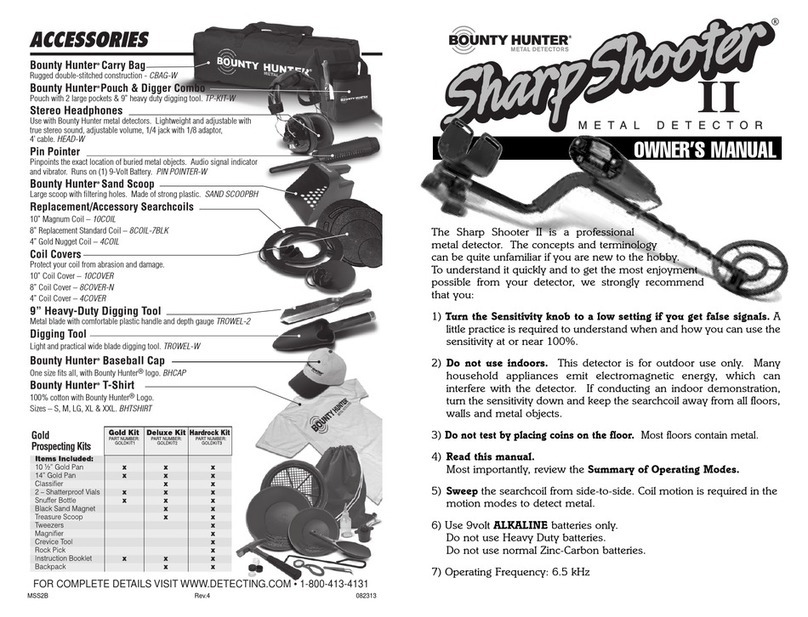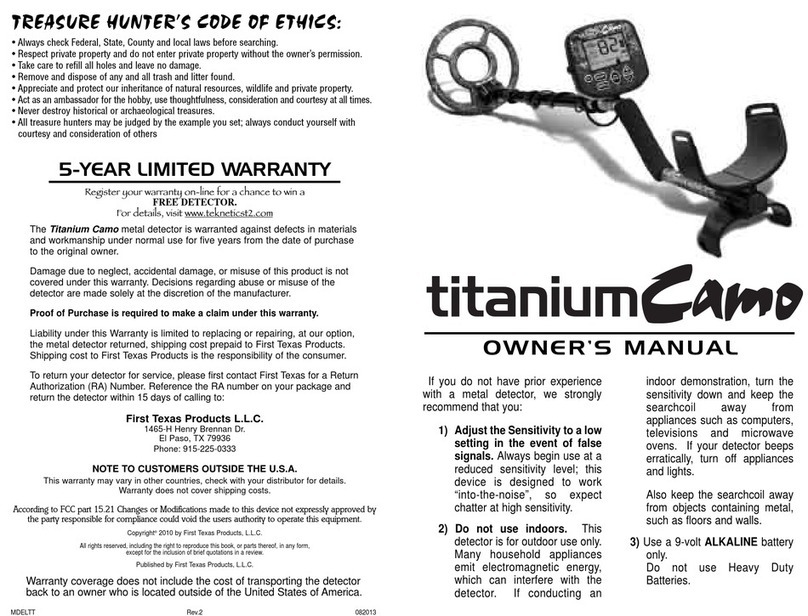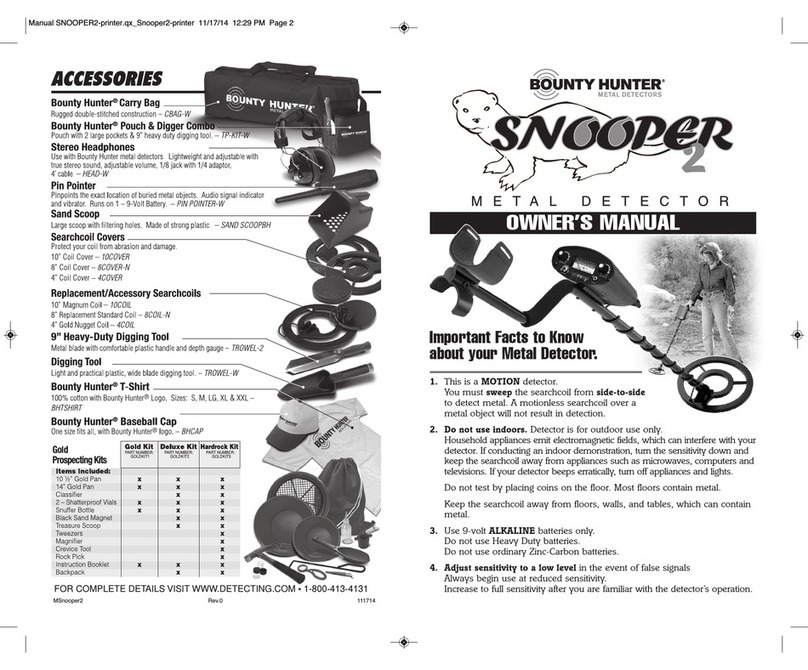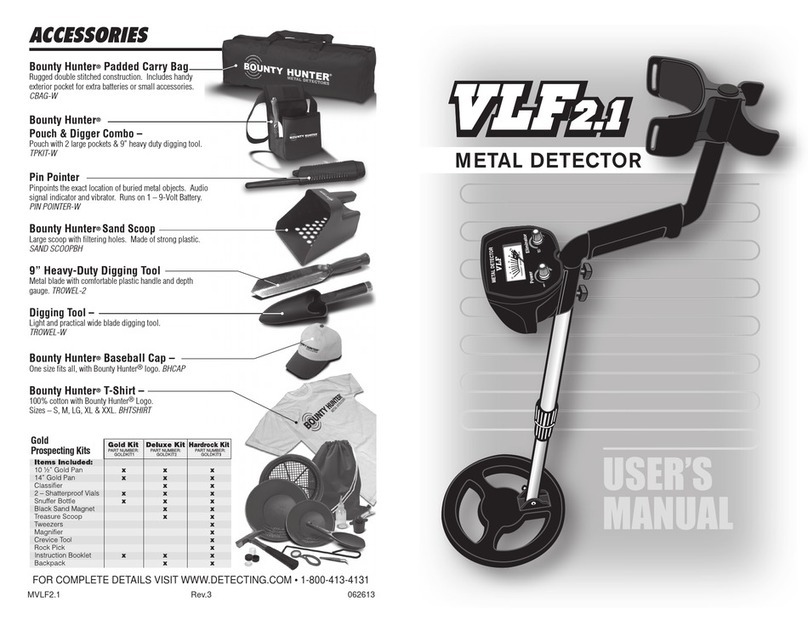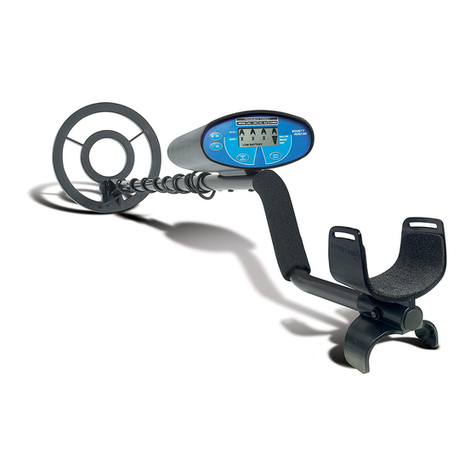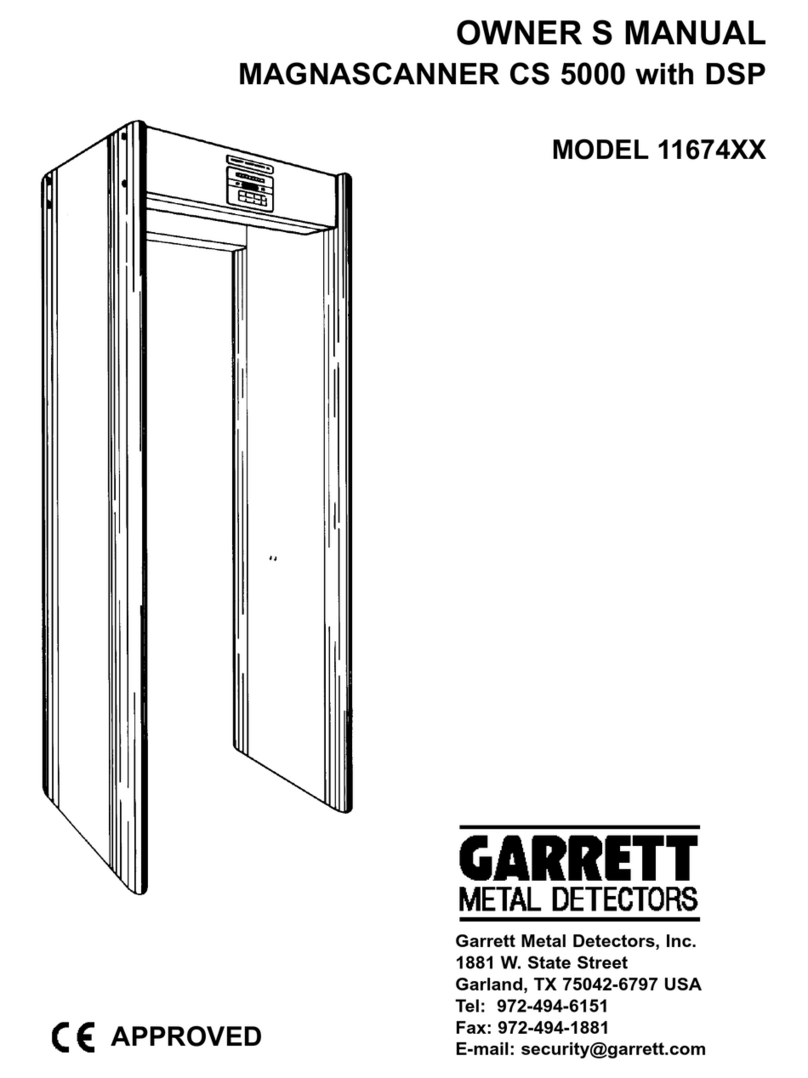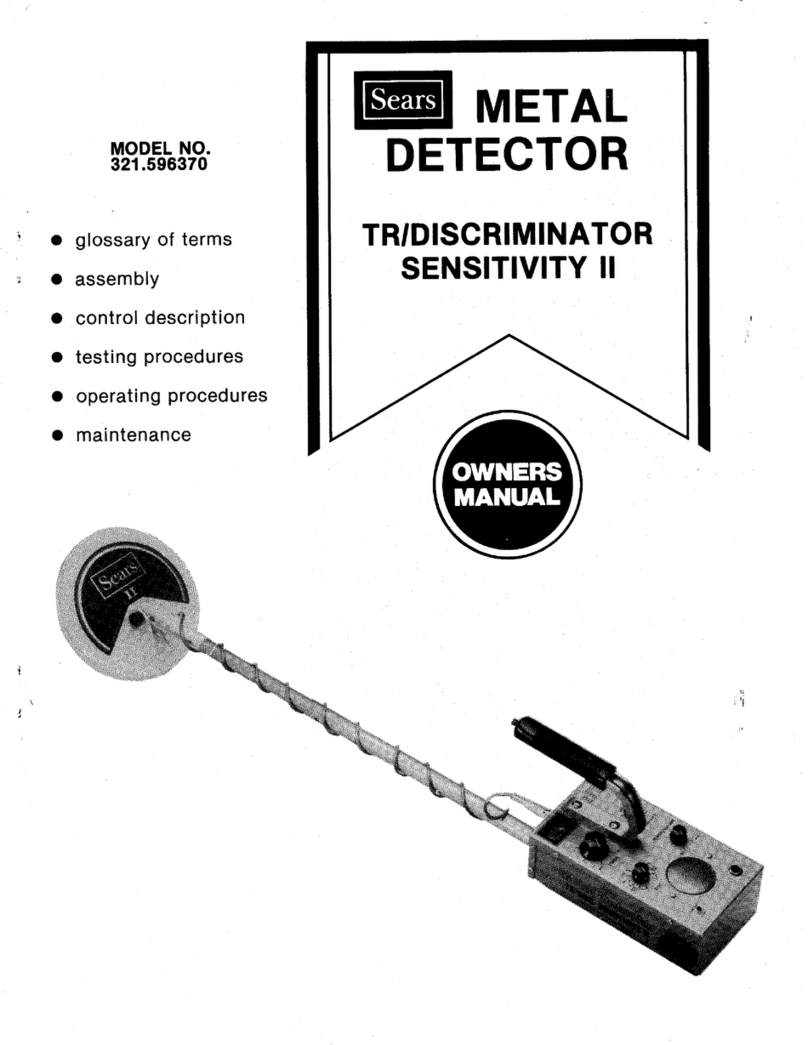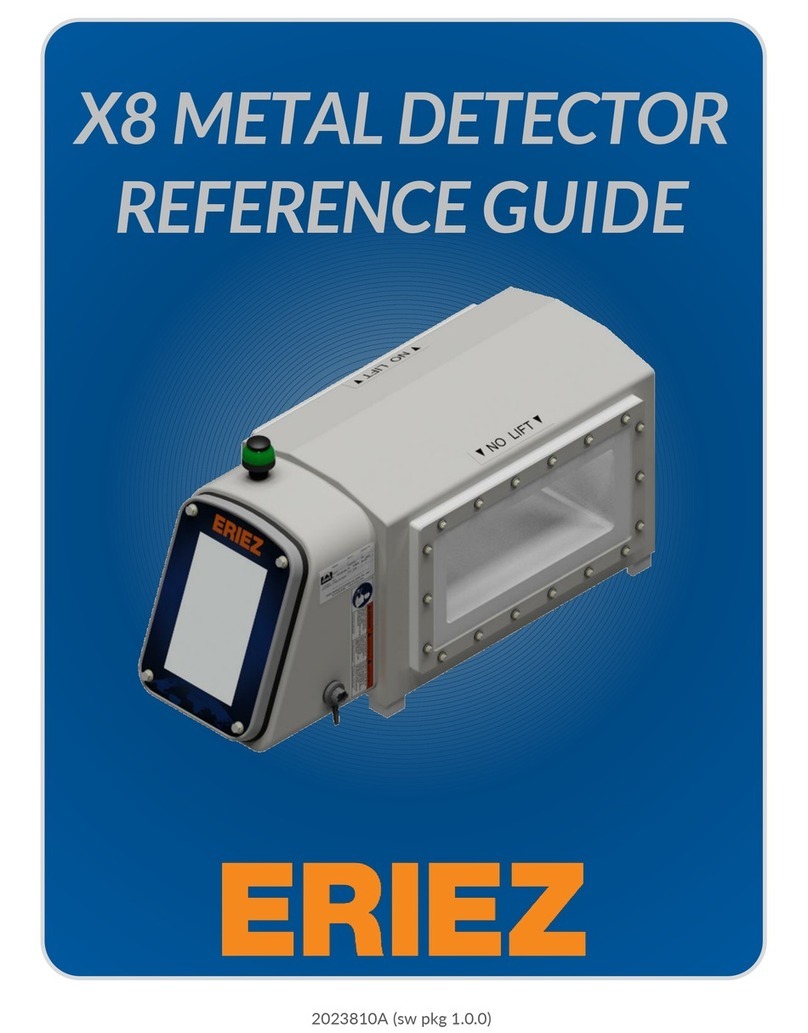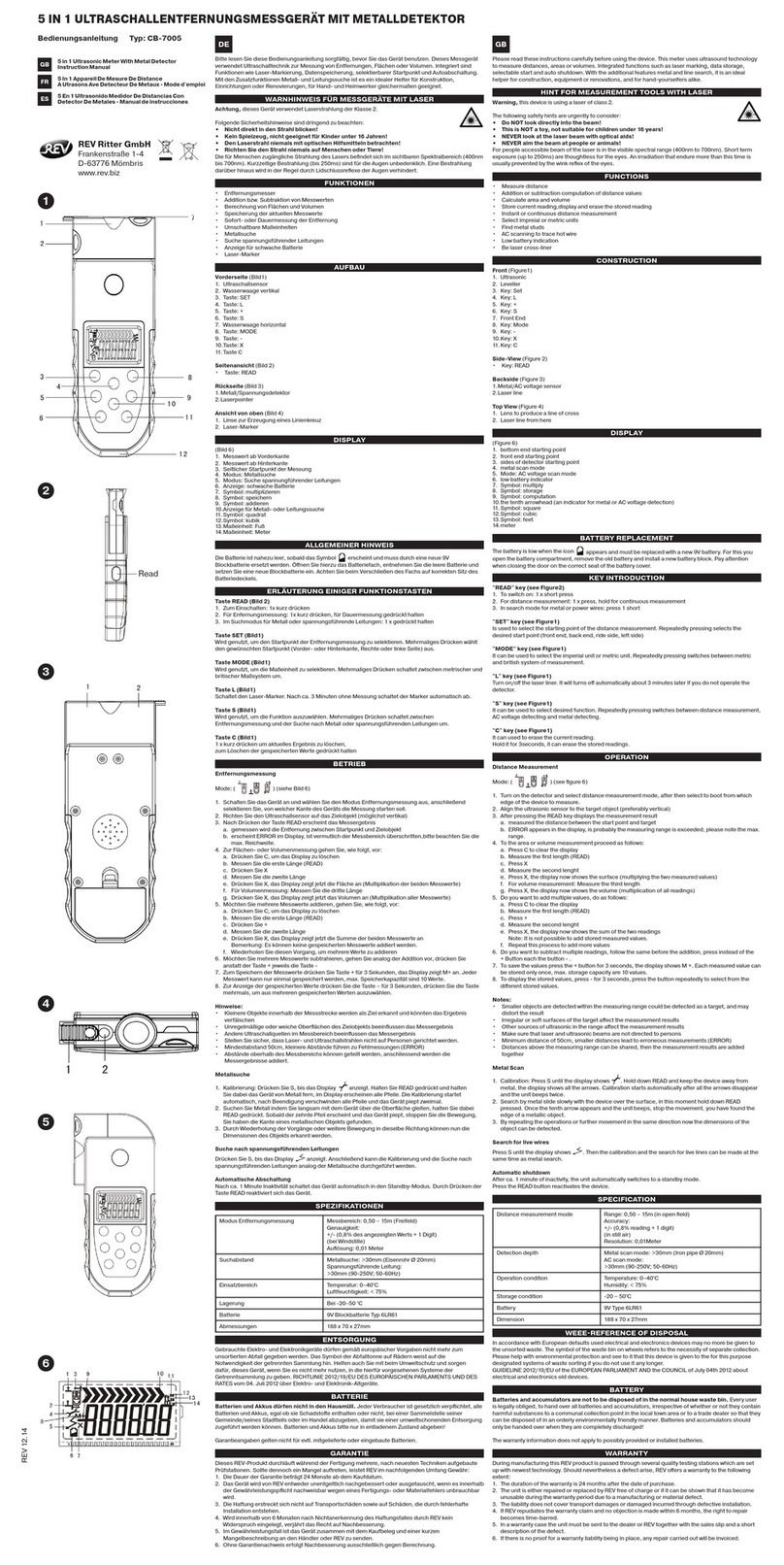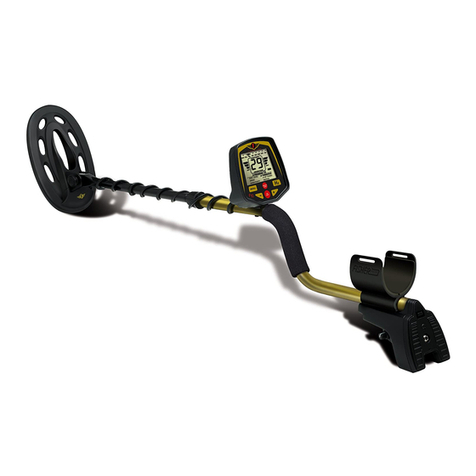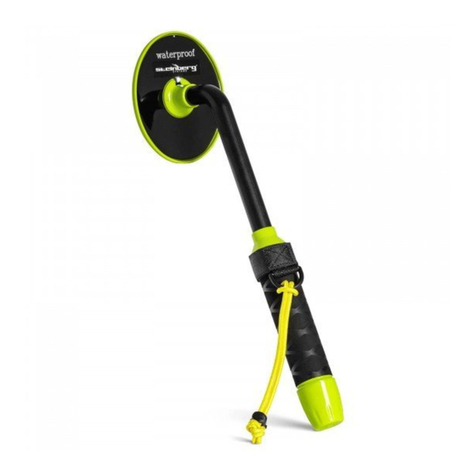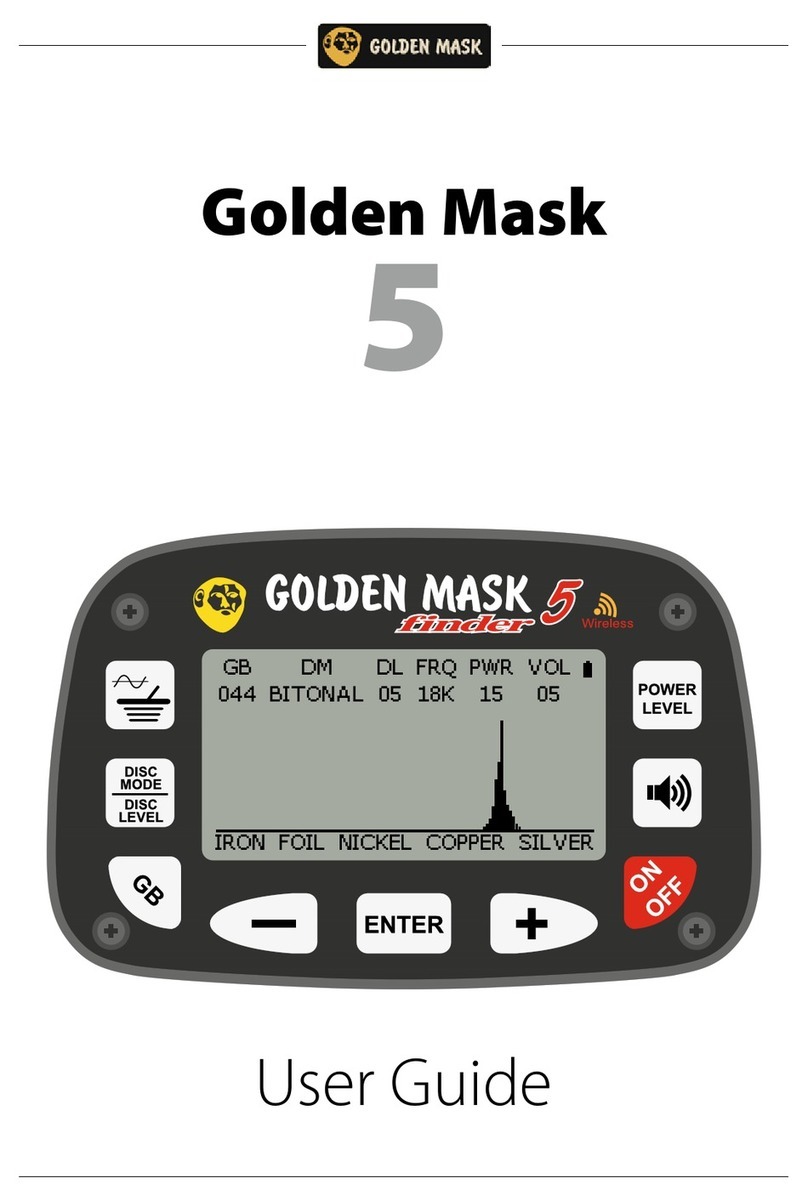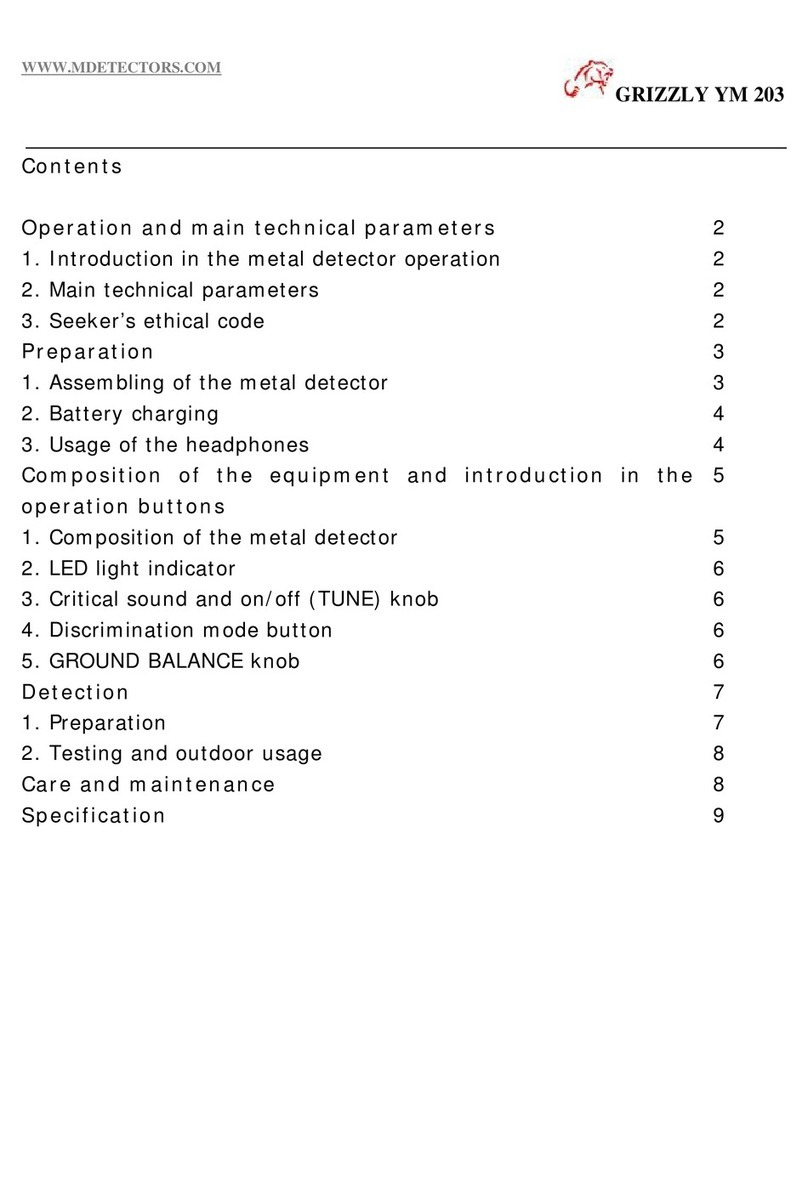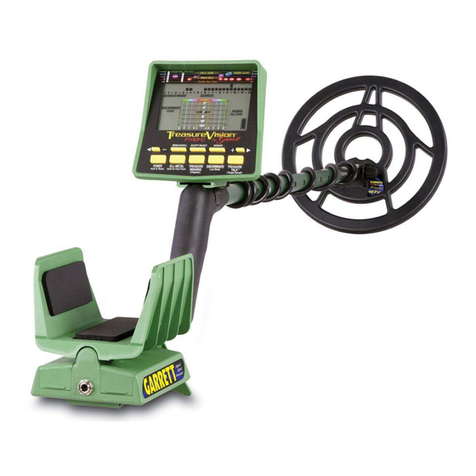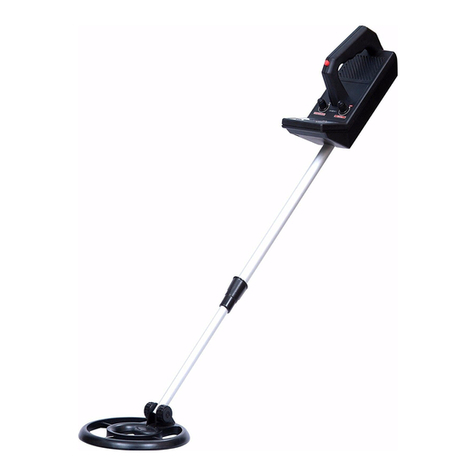TREASURE HUNTER’S CODE OF ETHICS:
• Always check Federal, State, County and local laws before searching.
• Respect private property and do not enter private property without the owner’s
permission.
• Take care to refill all holes and leave no damage.
• Remove and dispose of any and all trash and litter found.
• Appreciate and protect our inheritance of natural resources, wildlife and private
property.
• Act as an ambassador for the hobby, use thoughtfulness, consideration and
courtesy at all times.
• Never destroy historical or archaeological treasures.
• All treasure hunters may be judged by the example you set; always conduct yourself
with courtesy and consideration of others
First Texas Products, LLC
1465-H Henry Brennan
El Paso, TX 79936
(915) 633-8354
FIRST TEXAS PRODUCTS, LLC
5-YEAR LIMITED WARRANTY
Copyright ©2012 by First Texas Products, L.L.C.
All rights reserved, including the right to reproduce this book, or parts thereof, in any form, except for the
inclusion of brief quotations in a review.
Published by First Texas Products, L.L.C.
Bounty Hunter® is a registered trademark of First Texas Products, L.L.C.
The BOUNTY HUNTER PIONEER series of metal detectors is not associated or connected in any way with
Pioneer Corporation or its PIONEER brand audio and video products or other products.
www.detecting.com
Bounty Hunter Metal Detectors are warranted against defects in
workmanship or materials under normal use for five years from
date of purchase to the original user. Liability in all events is
limited to the purchase price paid. Liability under this Warranty is
limited to replacing or repairing, at our option, any Bounty Hunter
Detector returned, shipping cost prepaid, to First Texas Products,
LLC. Damage due to neglect, accidental damage or misuse of this
product is not covered by this warranty.
Proof of purchase is required to make a claim under this warranty.
NOTE TO CUSTOMERS OUTSIDE THE U.S.A.
This warranty may vary in other countries, check with your distributor for details.
Factory warranty follows the channel of distribution.
Warranty does not cover shipping costs
According to FCC part 15.21 Changes or Modifications made to this device not expressly approved by the party
responsible for compliance could void the users authority to operate this equipment.
192
TABLE OF CONTENTS
TERMINOLOGY . . . . . . . . . . . . . . . . . . . . . . . . . . . . . . . . . . . . . . . .3
ASSEMBLY . . . . . . . . . . . . . . . . . . . . . . . . . . . . . . . . . . . . . . . . . . .4
Easy Assembly . . . . . . . . . . . . . . . . . . . . . . . . . . . . . . . . . . .4-5
INSTALLING BATTERIES . . . . . . . . . . . . . . . . . . . . . . . . . . . . . . . . .6
DEMONSTRATION . . . . . . . . . . . . . . . . . . . . . . . . . . . . . . . . . . . . . .7
BASIC OPERATION . . . . . . . . . . . . . . . . . . . . . . . . . . . . . . . . . . . . .8
Turning on Your Detector . . . . . . . . . . . . . . . . . . . . . . . . . . . . .8
Set the Mode . . . . . . . . . . . . . . . . . . . . . . . . . . . . . . . . . . . . . .8
Reading the Display . . . . . . . . . . . . . . . . . . . . . . . . . . . . . . . . .9
Low Battery Indicator . . . . . . . . . . . . . . . . . . . . . . . . . . . . . . .10
Depth Indicator . . . . . . . . . . . . . . . . . . . . . . . . . . . . . . . . . . .10
SENSITIVITY ADJUSTMENT . . . . . . . . . . . . . . . . . . . . . . . . . . . . .10
MODES OF OPERATION . . . . . . . . . . . . . . . . . . . . . . . . . . . .11 & 12
AUDIO TARGET ID . . . . . . . . . . . . . . . . . . . . . . . . . . . . . . . . . . . .13
IN THE FIELD TECHNIQUES . . . . . . . . . . . . . . . . . . . . . . . . . . . .14
Pinpointing . . . . . . . . . . . . . . . . . . . . . . . . . . . . . . . . . . . . . . .14
Coil Movement . . . . . . . . . . . . . . . . . . . . . . . . . . . . . . .14 & 15
METAL DETECTING APPLICATIONS . . . . . . . . . . . . . . . . . . . . . .16
TROUBLESHOOTING . . . . . . . . . . . . . . . . . . . . . . . . . . . . . . . . . . .17
CARE & MAINTENANCE . . . . . . . . . . . . . . . . . . . . . . . . . . . . . . . .18
TREASURE HUNTER’S CODE OF ETHICS . . . . . . . . . . . . . . . . . . .19
WARRANTY INFORMATION . . . . . . . . . . . . . . . . . . . . . . . . . . . . .19
ACCESSORIES . . . . . . . . . . . . . . . . . . . . . . . . . . . . . . . .BACK COVER
The BOUNTY HUNTER PIONEER series of metal detectors is not
associated or connected in any way with Pioneer Corporation or its
PIONEER brand audio and video products or other products.





